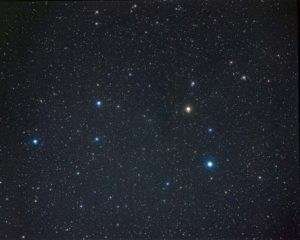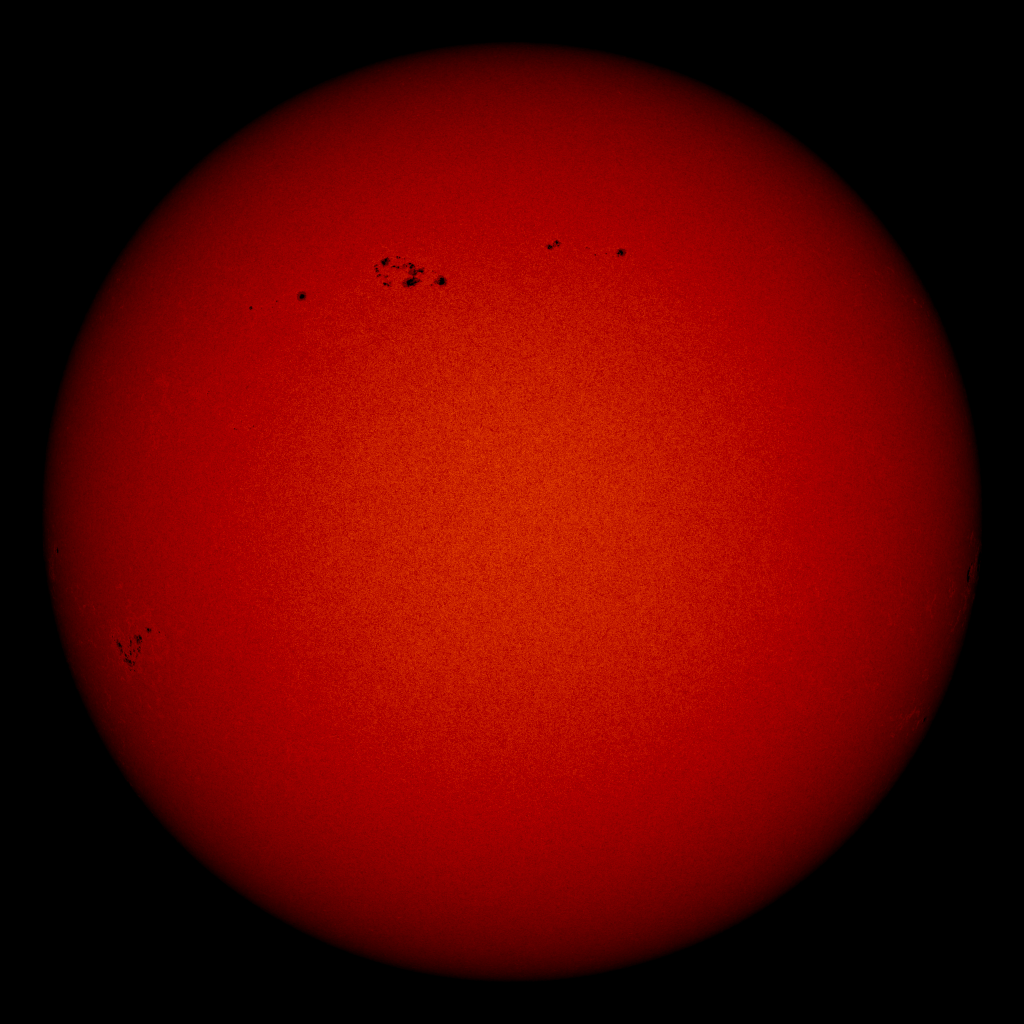by Gerald Rezes
The Vernal Equinox arrives at 8:06 pm (PDT) on March 19, 2024. The winter constellations are sinking into the west as the ones for spring are rising in the east. Spring constellations seem to lack the intensity of the winter ones but here are a few to keep in mind.
First off is Ursa Major which contains the more familiar asterism “The Big Dipper” (both not in the illustration). The Big Dipper is a familiar site to northern observers and offers several pointers to interesting objects. The two stars of the dipper point to Polaris the North Star. Just below the last star in the handle is M51, the brilliant Whirlpool Galaxy which is actually in the constellation Canes Venatici. Finally, in the handle, a test of eyesight, the middle “star” actually consists of two stars: Alcor and Mizar both are multiple star systems themselves. The Big Dipper’s handle curve suggests a great path to several bright Spring stars. Following the handle’s arc, the first bright star is Arcturus in Boötes followed by Spica in Virgo.
Moon Phases
- Mar. 25 – Full Moon

- Apr. 1 – Last Quarter

- Apr. 8 – New Moon

- Apr. 15 – First Quarter

- Apr. 23 – Full Moon

- May 1 – Last Quarter

- May 7 – New Moon

- May 15 – First Quarter

- May 23 – Full Moon

- May 30 – Last Quarter

- Jun. 6 – New Moon

- Jun. 13 – First Quarter

- (Source: Griffith Observatory)
Leo is probably one of the more familiar spring constellations. Leo is made up of a triangular grouping of stars for the lion’s hindquarters while the lion’s head and mane are represented by the backward question mark. The bright star Regulus marks the “period” in the question mark.
Hydra is one of the fainter constellations but is actually the largest. Look for the serpent’s circular head in the west, just ahead of Leo, and the body winding its way down and to the east until it stops just under Spica.
Messier Marathon
There are 110 astronomical objects cataloged by Charles Messier. In spring particularly at the end of March, northern hemisphere observers are in the position to attempt to obverse all 110 Messier objects in one night. The Messier Marathon is possible only at this time when the sun is positioned such that it is not obscuring any objects. Go about and try to find as many M numbers as you can. I personally like M104, the Sombrero Galaxy, a challenging object to spot from a suburban backyard.
Great American Eclipse – April 8, 2024
Plan to view the total solar eclipse on April 8, 2024. The Great American Eclipse website is one resource.
Planets
- Mercury starts as an evening planet reaching its greatest altitude on March 24. Then it heads into the morning sky. On May 13, it is at its greatest altitude in the morning.
- Venus is in the morning sky getting closer to the Sun as spring evolves. It will be in superior solar conjunction on June 4.
- Mars is in the morning sky throughout spring. Look for the moon to be in conjunction with it on May 4 and June 2.
- Jupiter is sinking fast in the western sky during spring. It will be in conjunction with the Sun on May 18. Look for a close conjunction with Mercury on June 4.
- Saturn is a morning planet throughout spring. Look for close conjunctions with the moon on May 3 and 31.
- Uranus is sinking quickly into the western sky during spring. It will be in solar conjunction on May 13.
- Neptune is a morning planet too close to the sun in early spring but better by June.
- Pluto is in Sagittarius and is a morning planet.
- Ref: https://in-the-sky.org/newscalyear.php?year=2024&maxdiff=7 & https://theskylive.com/pluto-info
Meteor Showers
- April 21-22 – The Lyrids peak.
- May 5-6: The Eta Aquarids peak.
Last Updated on November 17, 2023









Recent Comments